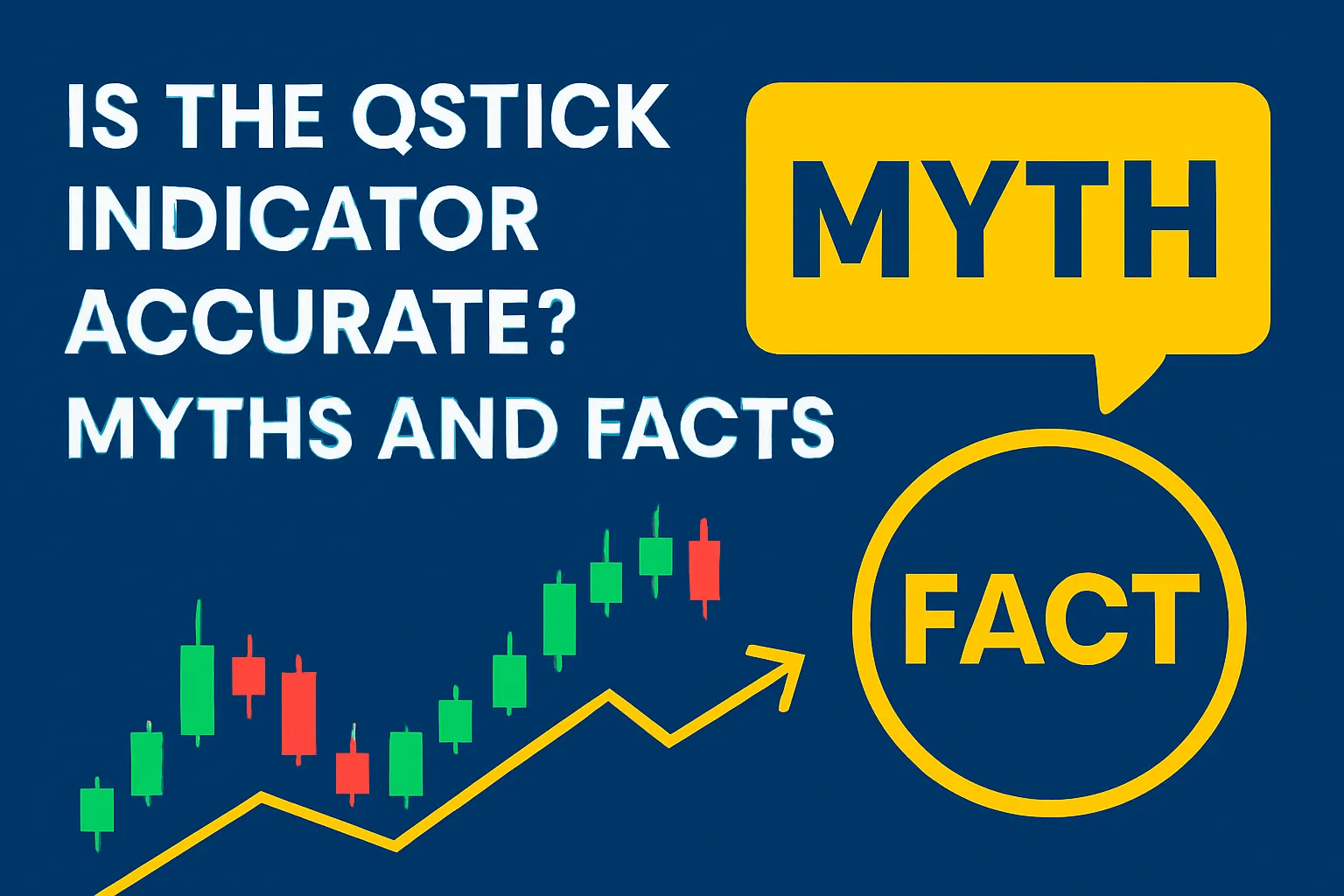Introduction
The Qstick Indicator Accuracy is a momentum-based technical analysis tool that helps traders identify trend strength and potential reversals. But how accurate is the Qstick? In this article, we’ll separate myths from facts, helping you understand when and how to trust Qstick signals for smarter trading.
Understanding Qstick Indicator Accuracy
The Qstick measures the average difference between closing and opening prices over a set period. While it’s simple and intuitive, no indicator is 100% accurate in every market condition. Its effectiveness depends heavily on how it’s used.
Common Myths About theQstick Indicator Accuracy
Myth 1: Qstick Alone Can Predict Market Moves
Fact:
Qstick is most effective when used with other tools like trendlines, volume analysis, or MACD. Trading solely based on Qstick signals often leads to false breakouts or missed opportunities.
Myth 2: Qstick Works in All Market Conditions
Fact:
Qstick performs best in trending markets. In sideways or choppy markets, it may give confusing signals. Context matters!
Myth 3: A Zero Line Cross Always Means a Reversal
Fact:
While a cross above or below zero can indicate a shift, it’s not foolproof. Always wait for confirmation from price action, volume, or other indicators.
Myth 4: Longer Periods Are Always Better
Fact:
Choosing a longer Qstick period (e.g., 21-day) smooths signals but delays entries. Shorter periods (e.g., 8-day) are faster but more prone to noise. Adjust the settings based on your trading style.
When the Qstick Indicator Is Most Accurate
- During Clear Trends: Bullish or bearish momentum is easier to track.
- After Breakouts: Confirms strength after major technical breakouts.
- Combined with Volume: A Qstick move backed by volume gives stronger confirmation.
When Qstick Can Be Less Reliable
- During Low Volatility: Results in flat and meaningless Qstick movements.
- In Range-Bound Markets: Frequent false signals can occur.
- Without Confirmation: Acting on Qstick signals without additional analysis increases risk.
Tips to Improve Qstick Indicator Accuracy
- Combine with Moving Averages to define the broader trend.
- Use alongside RSI or MACD for added confirmation.
- Trade in the direction of the major trend whenever possible.
- Check the volume when a Qstick signal appears.
- Adjust Qstick settings (period length) based on asset volatility.
Conclusion
The Qstick indicator is accurate when used correctly and in the right market conditions. While it’s not a magic bullet, combining Qstick with other technical tools, confirmation signals, and a trend-aware strategy makes it a valuable weapon in your trading arsenal.
By understanding the myths and facts, traders can set realistic expectations and get the most out of the Qstick’s momentum insights.













